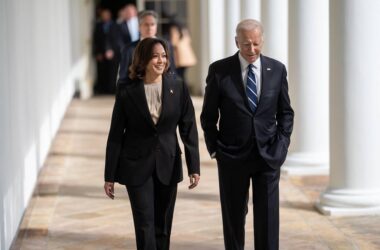Washington, D.C.–(ENEWSPF)–May 20, 2014. At an event featuring White House Domestic Policy Council Director Cecilia Munoz, the Center for American Progress today released a new report detailing how Promise Zones are helping to revitalize high-poverty communities. The report provides an overview of the federal government’s role in place-based initiatives, initial observations from the launch of Promise Zones, and recommendations for strengthening the effort moving forward.
“Local leaders are on the forefront of addressing some of our most complex social problems with limited resources and capacity,” said Tracey Ross, Senior Policy Analyst at CAP and one of the authors of the report. “The Promise Zones initiative presents an opportunity to transform these communities while making the federal government a more effective partner.”
While the United States is often called “the land of opportunity,” for many communities across the country, opportunities for a better future remain limited, and children are sentenced to a life of poverty. As a result, communities suffering from concentrated poverty continue to be isolated from mainstream social and economic opportunities, depriving the larger region of their human capital. It is evident that the intersection of community and poverty requires place-based strategies that focus on the entire range of issues a community faces and confronts those challenges simultaneously.
In January, a year after vowing in his 2013 State of the Union address to focus the nation’s attention on high-poverty communities, President Barack Obama made good on that pledge with the unveiling of his signature place-based effort to fight poverty: the Promise Zones initiative. Promise Zones designees—five in the first round announced in January—receive priority access to federal resources to support job creation, increase economic security, expand educational opportunities, increase access to quality, affordable housing, and improve public safety. Equally important, the initiative pulls together lessons from the administration’s previous efforts to improve struggling communities and is serving as an opportunity to rethink how the federal government can be a more effective partner to communities facing barriers to upward mobility.
In addition to providing an overview of the federal government’s role in place-based initiatives, the report released today, “A Renewed Promise: How Promise Zones Can Help Reshape the Federal Place-Based Agenda,” documents initial observations from the launch of Promise Zones. The report’s authors interviewed individuals working on the first rollout of the Promise Zone initiatives. Their findings reveal that the federal government is an accelerator of local efforts; the initiative is helping streamline relationships with federal officials; and Promise Zone designees are in need of technical assistance to leverage private-sector investments.
The report also sets forth a number of recommendations to strengthen the effort going forward. In order for the federal government to be a more effective partner in place-based work, administration officials must recognize how communities have changed and continue refining its role as a partner and leader. As the administration continues to shape the Promise Zones initiative, this presents an opportunity for the federal government to clearly define its role in place-based work going forward. In just the first few months of operation, the first five Promise Zone designees are providing some useful insights into how to strengthen the federal government’s role in partnering with local communities.
Erik Stegman, Associate Director of Half in Ten and co-author of the report, added, “Urban, rural, and tribal communities face markedly different kinds of challenges, which is why one-size-fits-all federal solutions have not been effective. Promise Zones are a serious shift in approach for the federal government—one where it has the potential to be a more responsive and dynamic partner.”
Read the report: A Renewed Promise: How Promise Zones Can Help Reshape the Federal Place-Based Agenda, by Tracey Ross and Erik Stegman
Source: http://www.americanprogress.org








